
Apple has just concluded this year’s fall event, during which it made several product announcements. These announcements included the unveiling of the next-generation Apple Watches and, of course, the new iPhone 15 lineup. One of the standout features of the new iPhone 15 models is the inclusion of USB-C. Apple has, at last, introduced USB-C to the iPhone, marking a significant move more than eight years after this USB connector began appearing on various devices, including Apple's 12” MacBook.
If you are wondering why this change was made and how this change will impact the iPhone user experience, you've come to the right place. In this article, we will delve into everything you need to know about USB-C for iPhone 15, including why Apple made this move, the history of connection interfaces on the iPhone, and more. But first, let's begin by sharing some basics about USB-C.
Table of content
What is USB-C?
USB-C, which is also called USB type-c is a versatile 24-pin connector designed to handle a wide range of data types, such as video, audio, PCI-E signals, and more. This innovative connector was created thanks to the collaborative effort between prominent tech giants, including Apple, Hewlett-Packard (HP), Intel, and Microsoft. These companies worked under the guidance of the USB Implementers Forum (USB-IF), an industry consortium dedicated to advancing USB technology.
What truly sets USB-C apart is its flexibility and reversibility, enabling users to connect it in either orientation for transmitting power and diverse data forms. It made its debut in 2014, gaining widespread acceptance by 2015 when the first MacBook featuring USB-C was launched. Since then, it has gradually become the standard connector for various devices, gradually phasing out the older USB-A and USB-B connectors.
USB-C's primary objective was to establish a universal connector capable of seamlessly transferring data, video, and power among a wide array of devices. Its compact design and versatility have elevated it to a central role in the tech landscape, with expectations for its utilization to continue expanding in the foreseeable future.
The development history of the iPhone interface
The charging and data transfer connector on the iPhone has undergone three significant changes ever since its introduction in 2007. Initially, Apple used the 30-pin connector (introduced in 2003) for its early iPhones. However, this connector had a couple of drawbacks, notably its size, which took up a substantial amount of space on the iPhone. The data transfer speeds of this cable were also not good enough at the time.
That’s why the 30-pin connector was replaced by the Lightning connector in 2012. The Lightning connector marked a major leap in innovation at the time, being more than 80% smaller and featuring a reversible design, putting an end to the frustration of fumbling with the connector's orientation when charging the device. Although its introduction initially posed some inconvenience for users with existing 30-pin accessories, Apple provided a solution by offering a 30-pin to Lightning adapter to ease the transition.
The Lightning connector had 8 symmetrical pins on each side and included an authentication chip for charging and data synchronization. However, it had its design vulnerabilities, as its small size made it prone to breakage. Before the iPhone 15 models were released, Lightning connectors had been in use for over a decade. Since it was not updated since its release, its data transfer speeds were significantly slower than the much newer USB-C. This connector had already been embraced by Apple's competitors for their phones.
In September 2023, Apple finally embraced the industry-standard USB-C port for its new iPhone 15 models. This move aligns with Apple's earlier adoption of USB-C in the 12-inch MacBook in 2015. USB-C also brings several advantages, including enhanced data transfer speeds (for the pro models) and the convenience of using a single cable to charge a variety of Apple devices, encompassing Macs, iPhones, and iPads.
Why it was changed from Lightning to USB C port
Apple's decision to ditch Lightning for USB-C port was primarily driven by the European Union's mandate. Last year, the European Union announced a directive requiring all smartphone manufacturers to adopt USB-C as a standardized charging connector by 2024. The objective behind this mandate was to reduce environmental waste by allowing consumers to use fewer power cables, as many devices would share a common charging interface.
Apple didn't explicitly bring up this regulatory compliance aspect during their product announcements to avoid the notion that external pressures had led to this shift. Nevertheless, in a Wall Street Journal interview last year, Greg Joswiak, Apple's Senior Vice President of Marketing, indirectly acknowledged the transition, mentioning that Apple had "no choice" in the matter.
After this interview, speculations of Apple introducing USB-C to the iPhone further escalated until Apple finally revealed the new iPhones equipped with USB-C. Besides the regulatory aspect, it's worth noting that Apple has been gradually integrating USB-C into its other products, including iPads and Macs. Adding iPhones to this lineup will obviously simplify the charging process for users, allowing them to use the same cable to charge multiple devices.
Additionally, USB-C presents the advantage of superior data transfer speeds, particularly for iPhone Pro models, which support USB 3 speeds. Ultimately, this will enhance the overall user experience (more on this in the next section).
USB C vs. Lightning
While Lightning and USB-C connectors might have some similarities, they are technically different connectors with several noteworthy distinctions. The most prominent difference between these two cable types lies in the fact that Lightning is a proprietary connector exclusively used in iPhones and various other Apple devices.
Besides lightning being proprietary, it has several other differences when compared to USB-C. These include;
Data Transfer Rates
USB-C is renowned for its significantly faster data transfer speeds, boasting rates that can soar up to 40Gbps (particularly when equipped with USB 4). In the case of the iPhone 15 Pros, they will support data transfer speeds of up to 10Gbps, as they lack the Thunderbolt technology found in iPad Pros and MacBooks. It's worth noting that Apple does not include USB 3 or USB 4 cables with these iPhones, so if you need to get such speeds on your new iPhone, you will need to purchase this cable separately. You can buy yourself one from Cable Time for only $17.80.
On the other hand, Lightning cables lag significantly behind, with a maximum transfer speed of 480Mbps, which makes USB-C more than 20 times faster. This substantial gap in data transfer capabilities positions USB-C as the superior choice for tasks such as connecting to high-speed external storage devices. This enhanced transfer speed is precisely why the iPhone 15 Pros will now offer support for recording ProRes videos directly onto external SSDs, a feature that could be a game-changer for videographers, especially those who opt for the lower storage capacity models of the iPhone 15 Pros.
Compatibility
Another notable advantage of USB-C lies in its extensive compatibility. USB-C can be used by a wide range of modern devices, including Android smartphones, Windows PCs, and gaming consoles like the PS5 and Xbox Series X. It is also the connector of choice for iPads and Macs and is fully compatible with Thunderbolt 3 and 4 ports, facilitating high-speed data transfers.
In contrast, Lightning remains confined to Apple devices, predominantly utilized in iPhones, older iPads, AirPods, and various Apple accessories such as AirPods. While USB-C compatibility can be achieved through the use of a USB-C to Lightning cable, Lightning remains tethered to Apple's ecosystem. USB-C's versatility promotes seamless cross-device connectivity and eliminates the need for multiple charging cables for your various devices.
Power Delivery
When it comes to power delivery, USB-C holds a distinct advantage. It supports higher wattage and current, boasting native power support for 100W/3A and, in some cases, up to 240W/5A, rendering it ideal for rapid charging. This level of power delivery is why we now have phones that can achieve a full charge in less than 30 minutes.
On the other hand, Lightning offers lower native power support, peaking at 12W/2.4A. To achieve fast charging with Lightning, one must use a USB-C to Lightning cable in conjunction with a 20W or higher power adapter. USB-C's superior power delivery capabilities enable swifter and more efficient charging, which is especially advantageous for devices equipped with larger batteries.
Durability
Both USB-C and Lightning connectors sport reversible ends, enhancing user convenience. The debate over the durability of the two connectors is still ongoing. Some users still think USB-C cables may have a longer lifespan, while others argue that Lightning's connecting tabs provide a more stable physical connection.
Ultimately, the durability of either connector hinges on factors such as usage patterns and the quality of the cable itself. Both USB-C and Lightning connectors are engineered with durability and user-friendliness in mind.
Potential for Expansion Accessories
USB-C offers a greater potential for expanding accessory options thanks to its versatility. For instance, it supports reverse charging capabilities, enabling users to connect a variety of accessories such as external SSDs, gaming controllers, and more. This versatility makes USB-C the preferred choice for those seeking to enhance their device's capabilities by using accessories.
In contrast, Lightning's lack of reverse charging capabilities posed challenges for accessory manufacturers in creating a diverse range of compatible add-ons. With USB-C, the possibilities for expanding a device's functionalities are more extensive, appealing to users desiring a wide array of peripherals and enhancements.
In summary, while both USB-C and Lightning connectors have their respective merits, USB-C shines in terms of data transfer speeds, compatibility, power delivery, and the potential for expanding accessory options. This makes it a better connector with all factors considered.
Need to replace some accessories when changing to the iPhone 15 models.
When making the transition to the iPhone 15 models, there's a likelihood that you'll need to update some of your accessories. Apple includes a USB-C to C cable with the iPhone 15s, which means some of your existing charging bricks may need to be swapped out for new ones that are compatible with this USB-C cable.
Furthermore, you might find it necessary to replace other accessories, such as power banks that previously featured a different type of output port. This shift in connectivity standards could also extend to other peripherals like car chargers, docking stations, and wired earphones, all of which might require updates or adapters to ensure seamless compatibility with the iPhone 15 models. Fortunately, Apple now offers a USB-C to Lightning adapter that allows you to connect your old Lightning accessories if the need arises.
Summary
In summary, Apple's transition to USB-C for the iPhone brings several benefits and a few short-term challenges. On the positive side, USB-C delivers faster data transfer speeds and enhances convenience by enabling users to use the same cable for charging or data transfer across various Apple devices. On the downside, this shift may necessitate the replacement of certain accessories, like charging bricks and power banks, potentially incurring additional costs for users.
Overall, this move signals Apple's alignment with global standards and regulatory requirements, particularly those established by the European Union. With iPhones now adopting USB-C, the accessories industry is poised for significant growth in the coming months as manufacturers rush to produce USB-C-compatible accessories for the new iPhone models.
Frequently Asked Questions
These are some of the common questions people have about USB-C.
What should you consider when buying USB-C products?
When you're in the market for USB-C products or cables, there are several important factors to keep in mind. These include;
- Cable Type: Make sure you choose the right type of cable for your specific needs, whether it's USB-C to USB-C, USB-C to USB-A, or another variation.
- Data Transfer Speed: Look for the supported data transfer speed, typically measured in Gbps (gigabits per second). If you require the fastest transfer speeds (provided your device supports them), opt for Thunderbolt USB-C cables.
- Cable Length: Select a cable length that suits your intended usage, whether it's for charging, connecting devices, or transferring data.
- Build Quality: Consider the cable's construction, including connectors and shielding, as this directly affects durability and reliability.
- Data and charging transfer capabilities: It is also important to note that some USB-C cables are only meant for charging and may not transfer data. However, there are also those that can do both charging and data transfer. So, it is crucial to choose one that does what you need it to do. In most cases, it is better to choose one that does both charging and data transfer, including audio & video transfer and several other data formats.
Which brands are well-known for USB-C products?
Several reputable brands offer USB-C products, including Apple, Samsung, Anker, Belkin, Google, and Aukey, among others.
Can USB-C transmit video?
Yes, it can. USB-C is a versatile connector capable of transmitting various types of data, including video. Many modern laptops, tablets, and smartphones (including the new iPhone 15 models) with USB-C ports support video output.
What should you do if the USB-C interface doesn't plug in or is not recognized?
If you encounter issues with plugging in or recognizing the USB-C interface, follow these steps to resolve the issue;
- Verify that you're using the correct orientation, as USB-C connectors are reversible.
- Check for debris or dirt in both the USB-C port on your device and the connectors of the cable; clean them if necessary.
- Inspect the cable for physical damage, as bent or damaged connectors may not establish proper contact.
- Test with a different USB-C cable or port to determine if the problem lies with the cable or the device.
- Consider updating your device's firmware or drivers, as compatibility issues can sometimes be resolved through software updates.
- If none of the above solutions resolve the issue, reach out to the manufacturer's support or seek professional assistance for further diagnosis and, if necessary, repair.

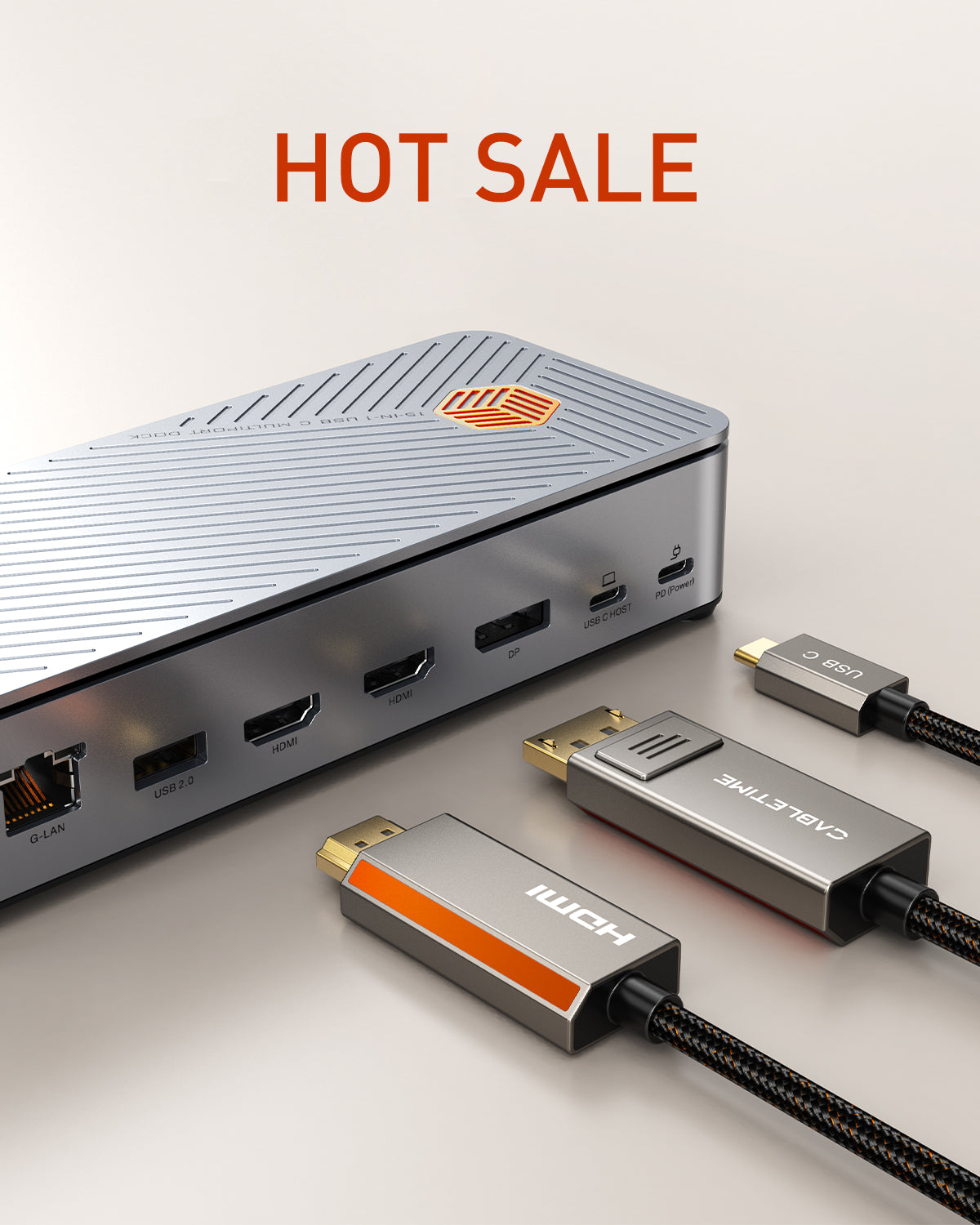
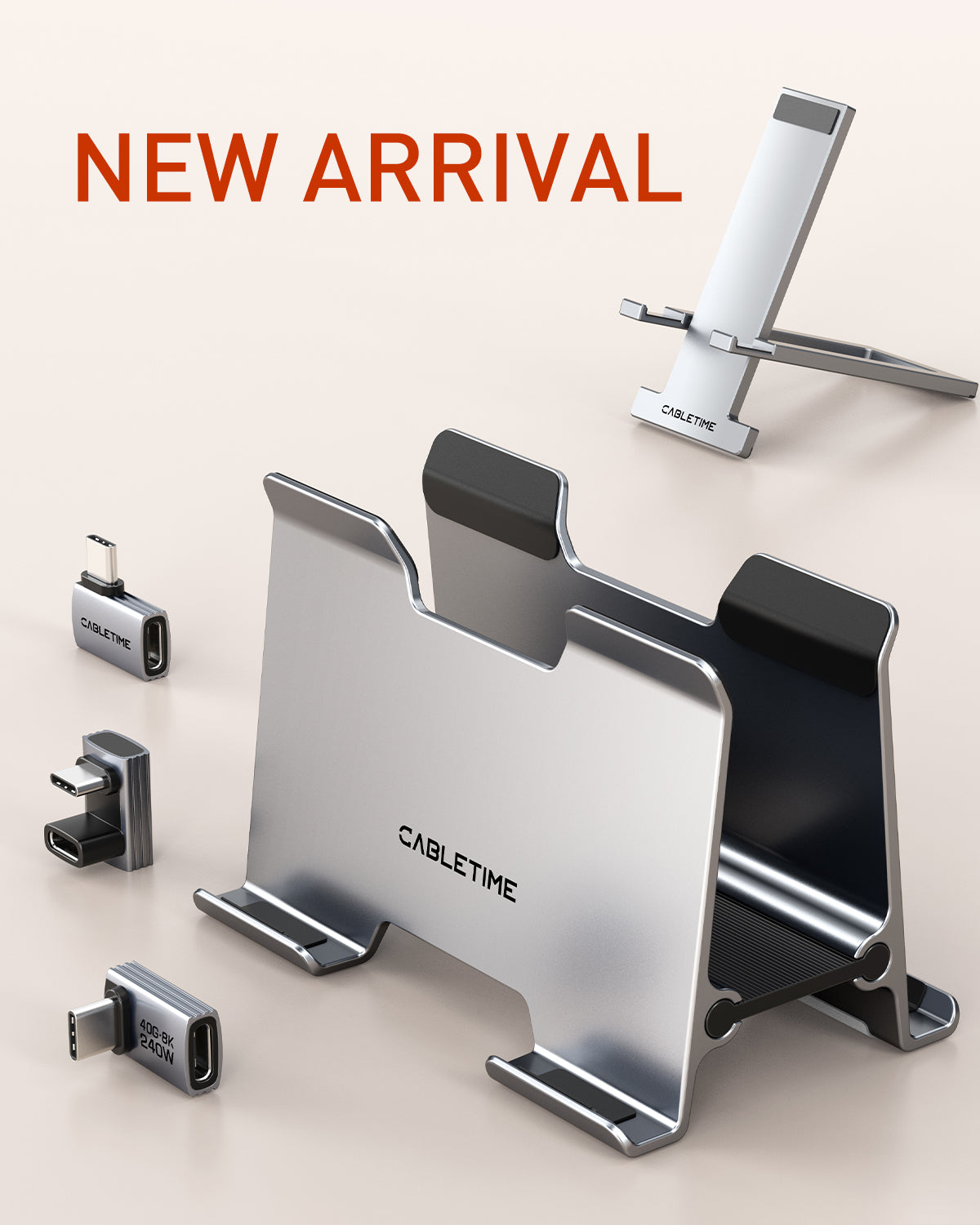
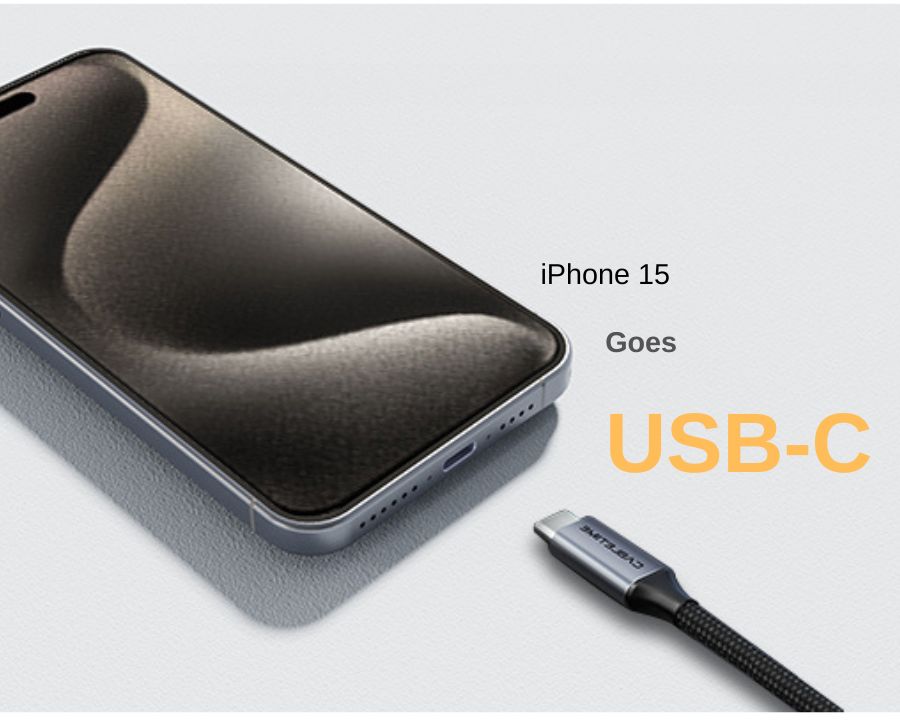
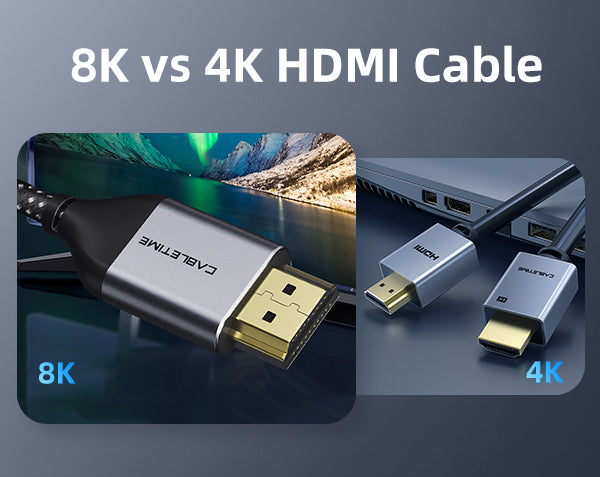
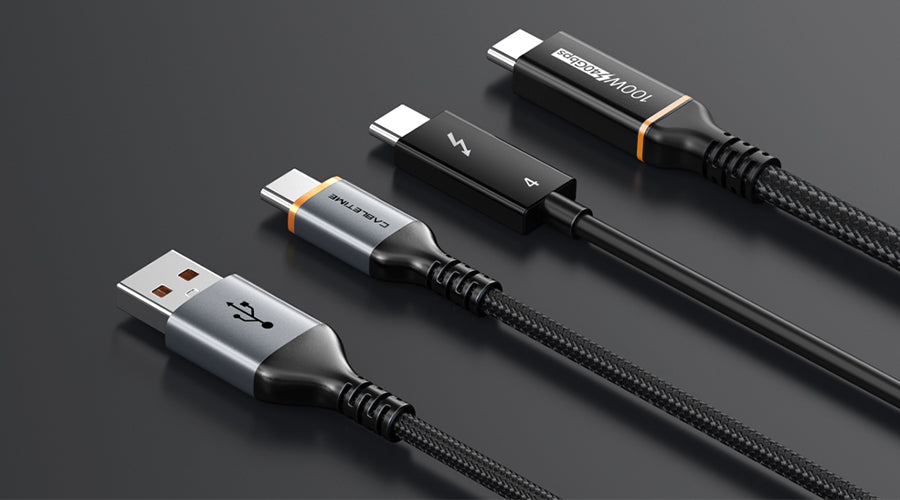
Leave a comment
This site is protected by hCaptcha and the hCaptcha Privacy Policy and Terms of Service apply.